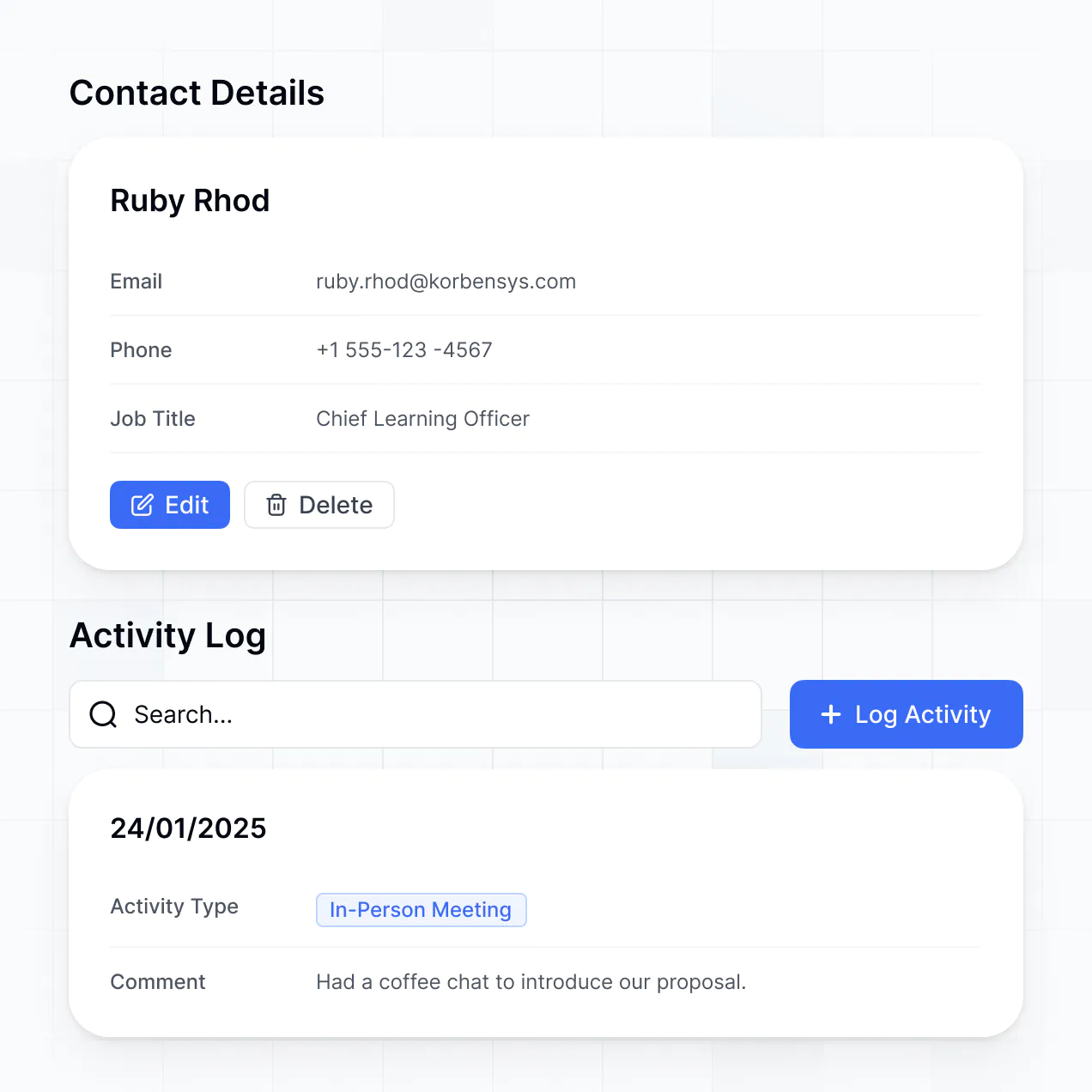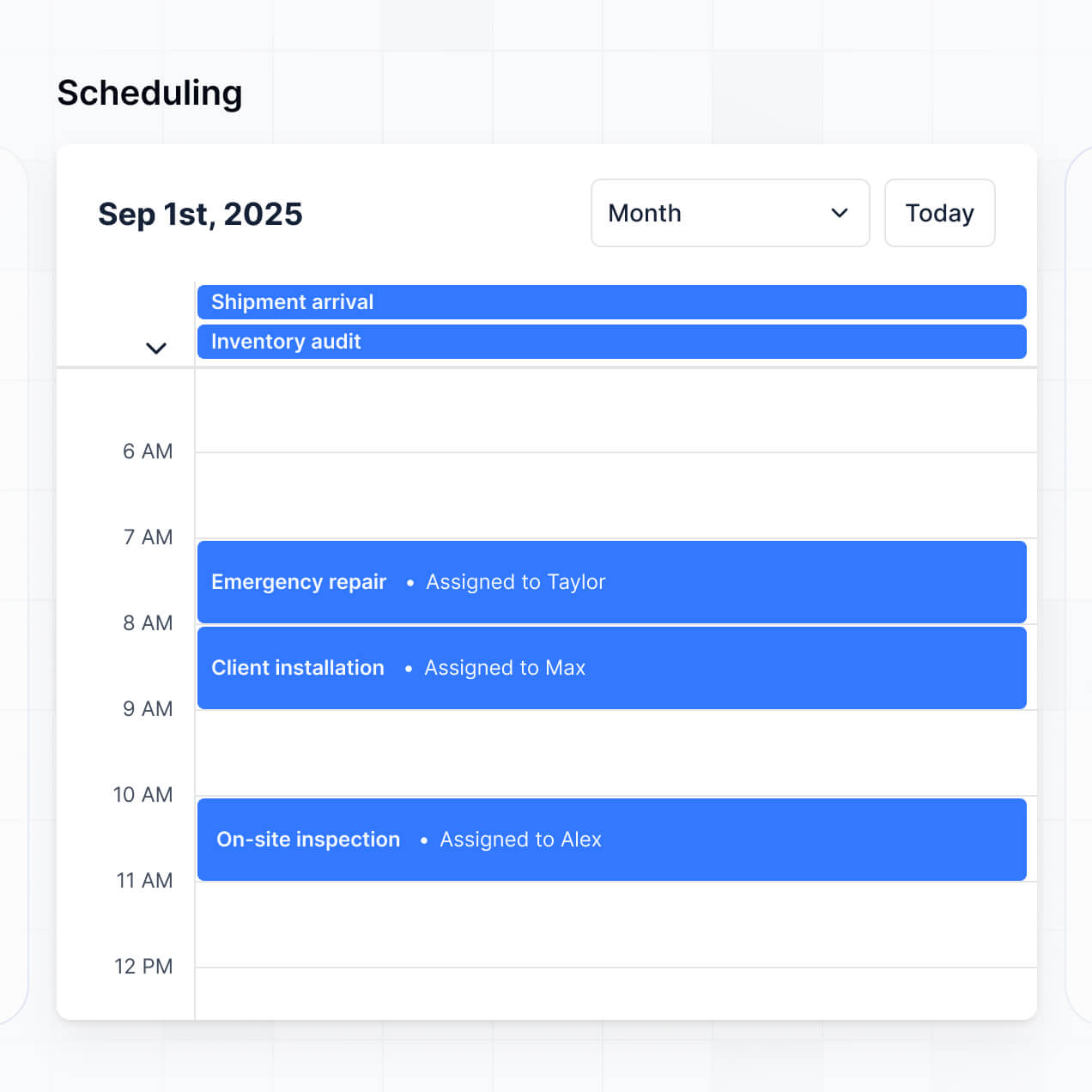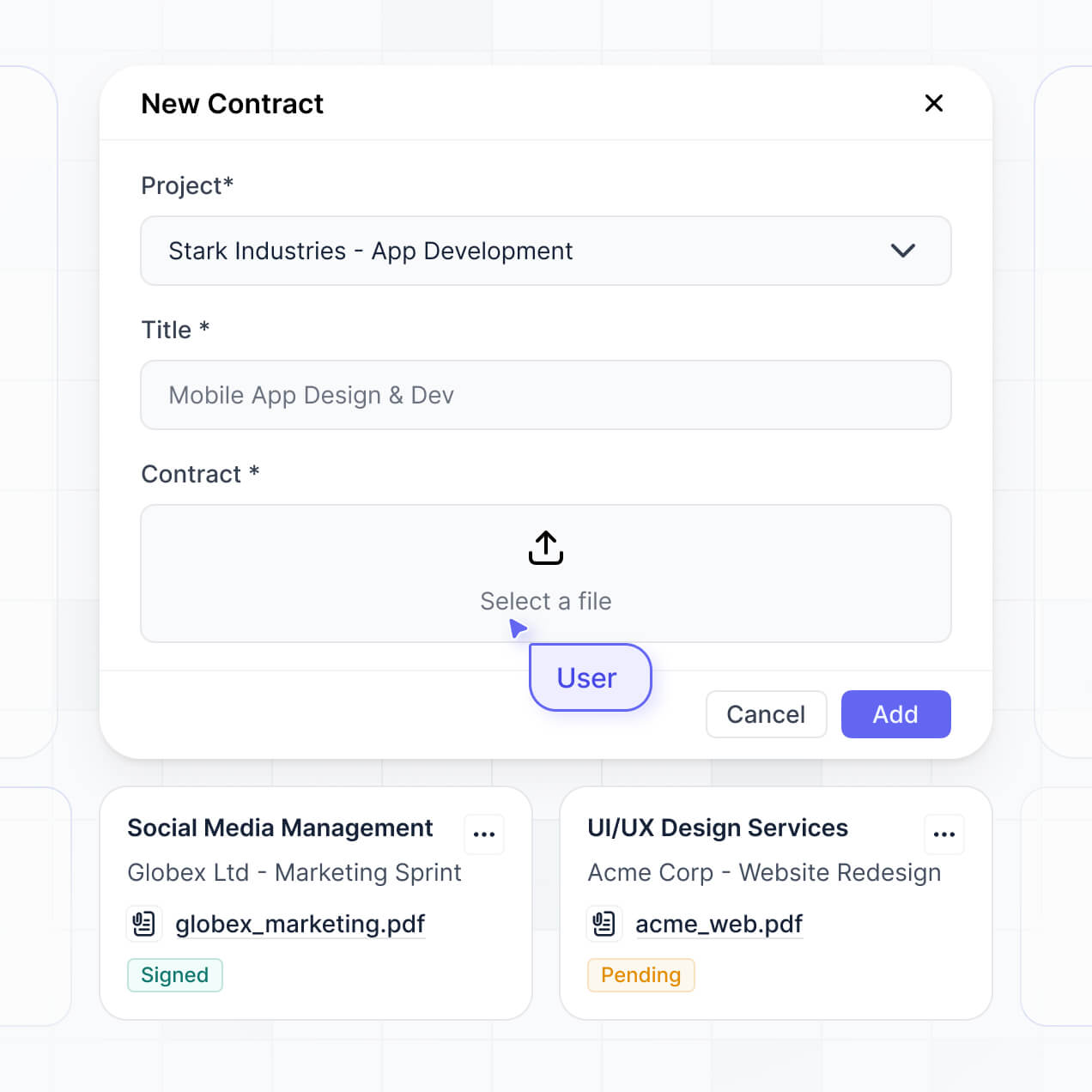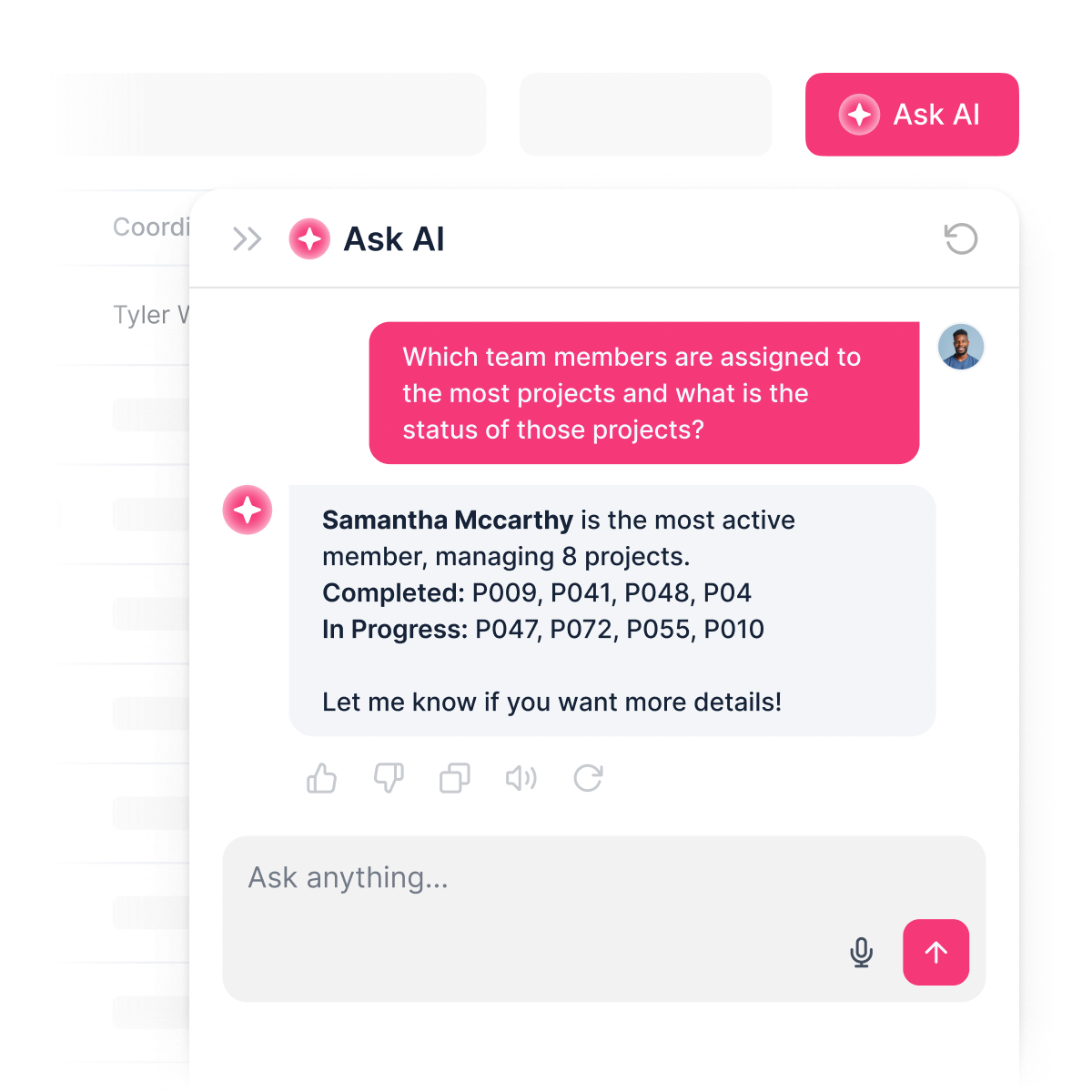
Build your own airtable crm, no code required
Organize contacts, track interactions, and streamline processes with a customizable CRM tailored to your business needs and goals.






Customize your CRM around your processes
Build a CRM with just the views and workflows your team needs. Add features at your own pace, and adapt as your processes grow or change.







Bring all your client data together in real time
Connect spreadsheets, CRMs, and other systems with real-time sync—or manage everything in Softr Databases. Centralize client and project data for streamlined workflows.











Custom access for every team. Built-in security, no dev time.
Empower your sales and support teams with the right CRM tools and access. Set up secure logins, user groups, and granular permissions—no dev work required.
Advanced permissions
Give sales reps, managers, and support staff tailored access so each role sees just the contacts and pipelines they need.
User groups
Give sales reps, managers, and support staff tailored access so each role sees just the contacts and pipelines they need.
Automations
Connect your CRM to Make, Zapier, or N8N to automate follow-ups, lead assignments, and data sync.
Works on any device
Access and update your CRM from any device. All apps are mobile-ready out of the box.
Easy, secure logins
Let your team log in easily via Google, email, or SSO—fast and secure, with no IT needed.
Security
Keep your CRM data safe with SOC2 and GDPR compliance, plus robust access controls.
.svg)
Put AI to work for sales teams
Sales teams can ask AI for lead details, activity history, or pipeline stats—right inside your CRM, powered by your live data.


Why Softr vs other software
No more one-size-fits-all tools or costly custom builds. Softr is easy to use and fully customizable, so you can launch faster, adapt as you grow, and skip the complexity of traditional software.

Easy, fast setup
Set up your Airtable CRM in minutes with drag-and-drop blocks and pre-built CRM templates.

Consolidate your stack
Add new views, custom fields, or integrations as your CRM needs change—no starting over needed.

Flexible as you grow
Manage your CRM, client portals, and reporting—all in one place, built on your Airtable data.

Build a fully custom crm in minutes
Connect to your data in seconds
Integrate with your spreadsheets and databases, including Airtable, SQL, Hubspot, Google Sheets, Supabase, BigQuery, and more—in just a few clicks. Your data is always secure and in sync.
Customize layout and logic
Drag and drop customizable building blocks with various views and functionalities. Granular permissions allow you to control what data each user can access, and which actions they can take.
Publish and launch
Ship applications that your team will love in minutes or hours, instead of days or weeks. Deploy on both desktop and mobile.


250+

600+












































Frequently asked questions
An Airtable CRM is a customizable customer relationship management system built using Airtable as the backend database. It lets your team manage contacts, track deals, store notes, and organize your sales pipeline—all in one place. Using a portal interface like Softr, your team can easily access and update CRM data without needing to deal with spreadsheets or scattered documents, making client and lead management much more streamlined.
Softr makes it simple to build an Airtable CRM that fits your team’s unique workflow. You can connect your Airtable base to Softr and instantly create a user-friendly interface, where team members can log in, manage contacts, track opportunities, and collaborate in real time—all powered by your Airtable data.
No coding is needed! You can start with a template or design your own layout, set up permissions so each team member sees just what they need, and brand the CRM to match your company’s style. It’s quick to set up, easy to update as your sales process evolves, and flexible enough to scale with your business.
You can add a variety of powerful features to your Airtable CRM, tailored to your sales and customer management needs. Some popular options include:
\- User logins – so each team member can access their assigned leads or contacts
\- Custom dashboards – to track sales progress, deals in the pipeline, and key metrics
\- Forms – for adding new contacts, logging calls, or updating deal stages
\- File sharing – to attach contracts, proposals, or meeting notes to CRM records
\- Search and filters – to quickly find specific contacts, deals, or accounts
\- Tables, lists, and detail views – to display leads, activities, or tasks in an organized way
\- Comments or status updates – to keep all team communication in one place
\- Charts – to visualize sales performance or pipeline health
\- Calendar view – for tracking follow-ups, meetings, or important deadlines
\- Permissions and roles – so each user only sees and edits what they should
All of these can be created with Softr’s drag-and-drop tools, so you never need to write code. And as your process changes, it’s easy to update your CRM setup.
No coding is required. You can build your Airtable CRM entirely using Softr’s visual editor. Everything from the layout to user permissions is customizable without any coding, making it easy for anyone on your team to set up and maintain the CRM.
Yes. You can manage multiple clients or teams within a single Airtable CRM setup. Each user will only have access to the records and data relevant to them, based on their login and assigned role. This is ideal if you’re tracking interactions for several clients or managing different sales teams, all from one centralized workspace.
Softr supports a wide range of data sources for your Airtable CRM. You can connect to Airtable, Google Sheets, Notion, Coda, monday.com, HubSpot, Clickup, Xano, Supabase, PostgreSQL, MySQL, SQL Server, MariaDB, BigQuery, and more. There’s also support for other sources via the REST API.
You’re not limited to a single source. You can pull data from several sources into your CRM and view them together—so, for example, you could combine sales pipeline data from Airtable and contact records from HubSpot in one place. Most integrations offer real-time, two-way sync, so your CRM data stays up to date automatically.
Yes, Softr gives you full control over the user experience within your Airtable CRM. You can tailor the layout, navigation, and content to fit your team’s workflow and branding. Each page or block can be displayed or hidden based on who’s logged in, ensuring every user only sees what’s relevant to their role.
You can set up different user roles, such as sales rep, manager, or admin, and define exactly what each role can access or modify. For example, sales reps might only view their own leads, while managers can oversee all CRM records. You can also filter data dynamically, so each user sees a personalized view based on their login. This makes it easy to manage multiple users, teams, or pipelines securely within your CRM.
Yes, you can. You don’t need existing data in another tool to start building your Airtable CRM with Softr. If you’re starting from the ground up, you can use Softr Databases, which integrate seamlessly with your CRM setup.
If you already use Airtable, Google Sheets, HubSpot, Notion, Coda, monday.com, Supabase, or SQL, you can connect those to your CRM as well. You also have the option to bring in other data sources using the REST API connector. No matter how you start, you’re in control of how your CRM data is organized and displayed.
Yes, you can fully white-label your Airtable CRM in Softr. You can use your own logo, brand colors, fonts, and custom domain to ensure your CRM looks and feels like an extension of your organization. You also have the option to remove all Softr branding, so only your team’s identity is visible throughout the CRM.
Absolutely. Softr provides extensive flexibility to customize both the design and layout of your Airtable CRM. You can adjust colors, fonts, spacing, and overall page structure to align with your internal branding guidelines. You decide the layout of each page, choose which blocks to display, and determine what different users see when they log in.
To manage your CRM data, you can choose from several block types:
\- Table blocks – to display structured records like contacts, deals, or activity logs
\- List or Card blocks – to present information like accounts, pipelines, or opportunities
\- Detail View – for showing single records, such as a contact’s full profile
\- Forms – for data input or lead capture
\- Charts – to visualize pipeline or performance metrics
\- Calendar blocks – to track meetings, follow-ups, or deadlines
If you need to make changes, you can easily update the design and content in Softr’s visual builder at any time.
Security is a priority with Softr. All data is encrypted in transit (TLS) and at rest, with your Airtable CRM hosted on secure, reliable infrastructure. You have full control over user access, with role-based permissions, user management within Airtable, visibility rules, and app-wide restrictions to protect sensitive CRM information.
When connecting to Airtable or other data sources, Softr doesn’t store your CRM data—it simply displays live data according to your access permissions. You’re always in control of who can view or edit your CRM data.
Softr also follows best practices for authentication, access control, and platform monitoring to keep your CRM data safe.
You can start building your Airtable CRM for free. Softr’s Free plan lets you publish one CRM app with up to 10 users and 2 user groups, and supports standard data sources like Airtable, Softr Databases, and Google Sheets.
If your CRM requires more users or advanced features, you can explore Softr’s paid plans: <https://softr.io/pricing>
Softr is designed to make building powerful, user-facing apps—like an Airtable CRM—quick and accessible, without any need for coding or developer resources. What makes Softr stand out is how fast you can launch a working CRM and how seamlessly it connects to your existing Airtable data.
Unlike some platforms focused on mobile apps (like Glide) or developer-heavy tools (like Retool), Softr is ideal for non-technical teams who want control over design, user experience, and permissions. You can build on live data from Airtable, Google Sheets, Softr Databases, or SQL, and create secure, branded CRM apps for your team.
You have visual control over every element, from content and design to role-based visibility. Since Softr includes built-in features like user roles, forms, and conditional logic, you won’t need to piece together multiple tools to launch a polished CRM.
Yes. Softr offers a variety of integrations so you can connect your Airtable CRM with the rest of your tech stack. You can automate tasks and sync data using platforms like Zapier, Make, and N8N, or connect with tools such as Stripe for payments or Intercom for support. Softr also supports REST API and webhooks for more advanced workflow automations.
Whether you want to trigger external actions from CRM updates, automate notifications, or pull in data from other platforms, you can build these capabilities into your Airtable CRM—no coding required.
























